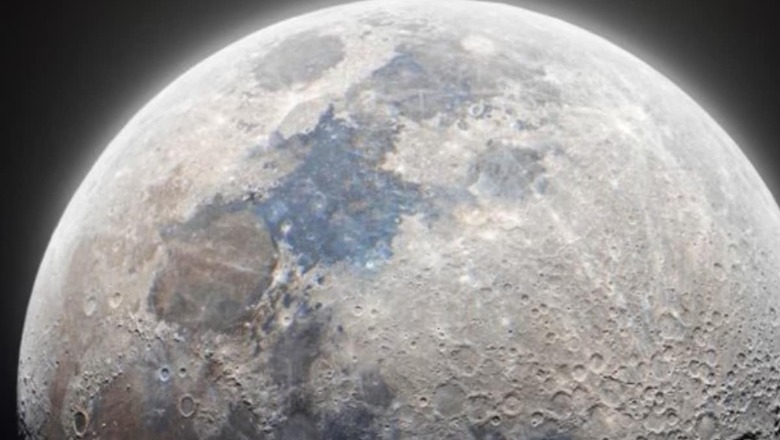
views
Earth’s celestial companion, the moon, has been silently undergoing changes, with new research indicating a significant shrinkage in its size over the past few hundred million years. A study published in the Planetary Science Journal on January 25 reveals that the moon has contracted by more than 150 feet in circumference due to the gradual cooling of its core. The collaborative effort, led by scientists from NASA, the Smithsonian, Arizona State University and The University of Maryland, has uncovered evidence suggesting that this ongoing lunar shrinkage has led to notable alterations in the terrain around the Lunar South Pole. The matter of concern is the impact on areas slated for exploration during NASA’s Artemis III crewed mission.
Described as akin to the wrinkling of a grape turning into a raisin, the moon’s shrinking process results in a brittle surface, causing faults to form as sections of the crust push against each other. These faults, in turn, trigger seismic activity known as moonquakes, echoing the threat faced by Earth’s residents living near tectonic fault lines.
The study’s findings connect a group of lunar faults in the south-polar region to a powerful moonquake recorded by Apollo seismometers more than 50 years ago. Computer models were employed to simulate surface stability, revealing certain areas vulnerable to lunar landslides caused by seismic activity.
Thomas R. Watters, a study co-author and senior scientist emeritus at the National Air and Space Museum, was quoted by Phys Org., cautioning, “The global distribution of young thrust faults, their potential to be active, and the potential to form new thrust faults from ongoing global contraction should be considered when planning the location and stability of permanent outposts on the moon.”
Shallow moonquakes, occurring approximately 100 miles deep into the moon’s crust, can be potent enough to damage structures and equipment. Unlike earthquakes on Earth, shallow moonquakes can last for extended periods, posing a potential threat to future lunar settlements.
Nicholas Schmerr, study co-author and University of Maryland geologist, told Phys Org., “The reworked surface material can be micron-sized to boulder-sized, but all very loosely consolidated. Loose sediments make it very possible for shaking and landslides to occur.”
The study raises concerns about the safety of potential human settlements on the moon. The team plans to continue mapping out lunar seismic activity to identify additional locations that may pose risks to human exploration.
With NASA’s Artemis missions on the horizon, scheduled for a crewed flight in September 2025 and a crewed moon landing in September 2026, researchers emphasise the need to prioritize the safety of astronauts and infrastructure in the face of these newfound challenges.
“As we get closer to the crewed Artemis mission’s launch date, it’s important to keep our astronauts, our equipment, and infrastructure as safe as possible,” Schmerr noted. He further added, “This work is helping us prepare for what awaits us on the moon — whether that’s engineering structures that can better withstand lunar seismic activity or protecting people from really dangerous zones.”




















Comments
0 comment